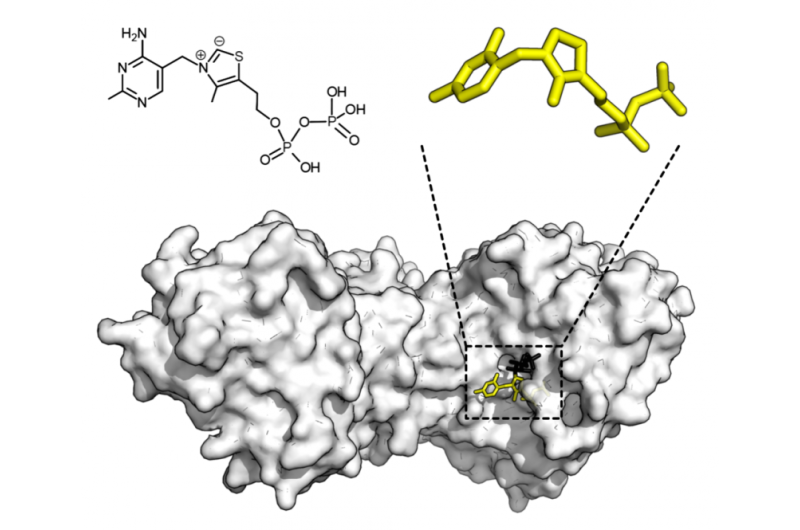Researchers decode the structure of the molecular complex that carries detoxifying enzymes in cells to the right place

Peroxisomes are essential, membrane-enclosed vesicles that occur in every cell. An arsenal of enzymes inside them breaks down harmful substances, thereby detoxifying the cells. A team of scientists led by Prof. Dr. Bettina Warscheid from the University of Freiburg, Prof. Dr. Ralf Erdmann from the Ruhr University Bochum and Prof. Dr. Christos Gatsogiannis from the University of Münster has studied the molecular complex that carries the enzymes to where they are needed in the peroxisome. They have been able to cast light on the structure of the complex with great precision and obtain insights into the mechanisms of how it functions. Their results have been published in the journal Proceedings of the National Academy of Sciences.
Cells contain numerous vesicles of different sizes. Known as organelles, they carry out specific functions. While mitochondria are like power stations providing energy for the cells, peroxisomes are more like sewage plants. Here, dozens of enzymes work on the degradation of harmful substances and the synthesis of useful ones. The toxic hydrogen peroxide produced during this process is immediately neutralized in the peroxisomes. Defects in peroxisomes or their enzymes lead to severe diseases, usually with fatal outcomes.
Like most organelles, peroxisomes also cannot produce their own enzymes. Instead, the right enzymes must be distributed to the right organelles. Enzymes intended for the peroxisome have one of two specific signal sequences that are recognized and bonded by import receptors in the interior of the cell. These import receptors are then passed from a docking complex to access pores in the peroxisomal membrane which trap the enzymes. Ralf Erdmann's group has already been able to show in earlier work that the enzymes are transported into the interior by different pores, depending on which of the two signal sequences they carry. "Until now we've known very few details about this process though," says Erdmann. The docking complex that traps the import receptors on the peroxisomal membrane appears to have a key role. Now the researchers have succeeded for the first time in determining the architecture of this complex at near-atomic resolution. "The close cooperation of scientists with expertise from different fields was the key to success," says Bettina Warscheid.
Essential components of the docking complex are the two proteins Pex14p and Pex17p. Tobias Hansen succeeded in isolating a highly pure complex of these proteins as part of his doctoral thesis at the University of Bochum. By applying cryo-electron microscopy and tomography, Pascal Lill at the MPI in Dortmund obtained the structure of the complex, which consists of elongated strands arranged parallel to each other, together forming an overall rod-like structure. Daniel Wendscheck, a doctoral student at the University of Freiburg, was able to determine with native mass spectrometry and chemical cross-linking that the complex is composed of a total of three copies of the Pex14p protein and one Pex17p.
The group's joint work reveals that the three Pex14p proteins show flexible areas that protrude into the cell like tentacles. The scientists suspect that the tentacles serve to 'fish' for as many loaded receptors as possible. "This complex is essential for functional peroxisomes," says Christos Gatsogiannis. "Our first picture of its structure and a mechanistic model of its function form an important basis for further studies of peroxisomes and could also contribute to a better understanding of peroxisomal diseases."
More information: Pascal Lill et al. Towards the molecular architecture of the peroxisomal receptor docking complex, Proceedings of the National Academy of Sciences (2020). DOI: 10.1073/pnas.2009502117
Journal information: Proceedings of the National Academy of Sciences
Provided by Albert Ludwigs University of Freiburg



















